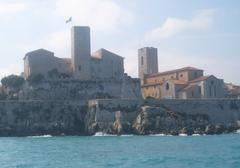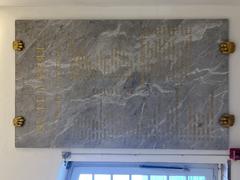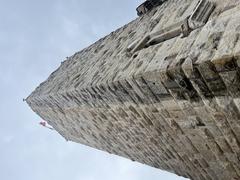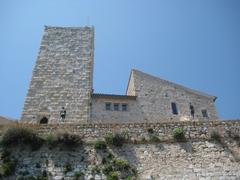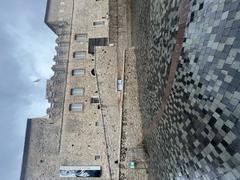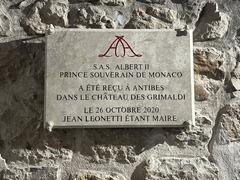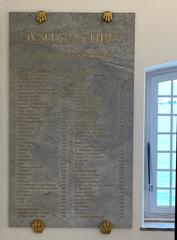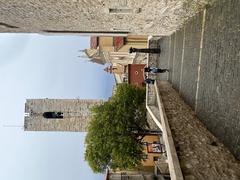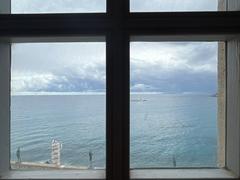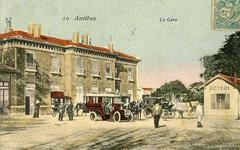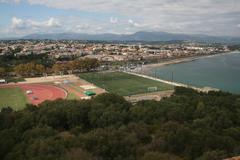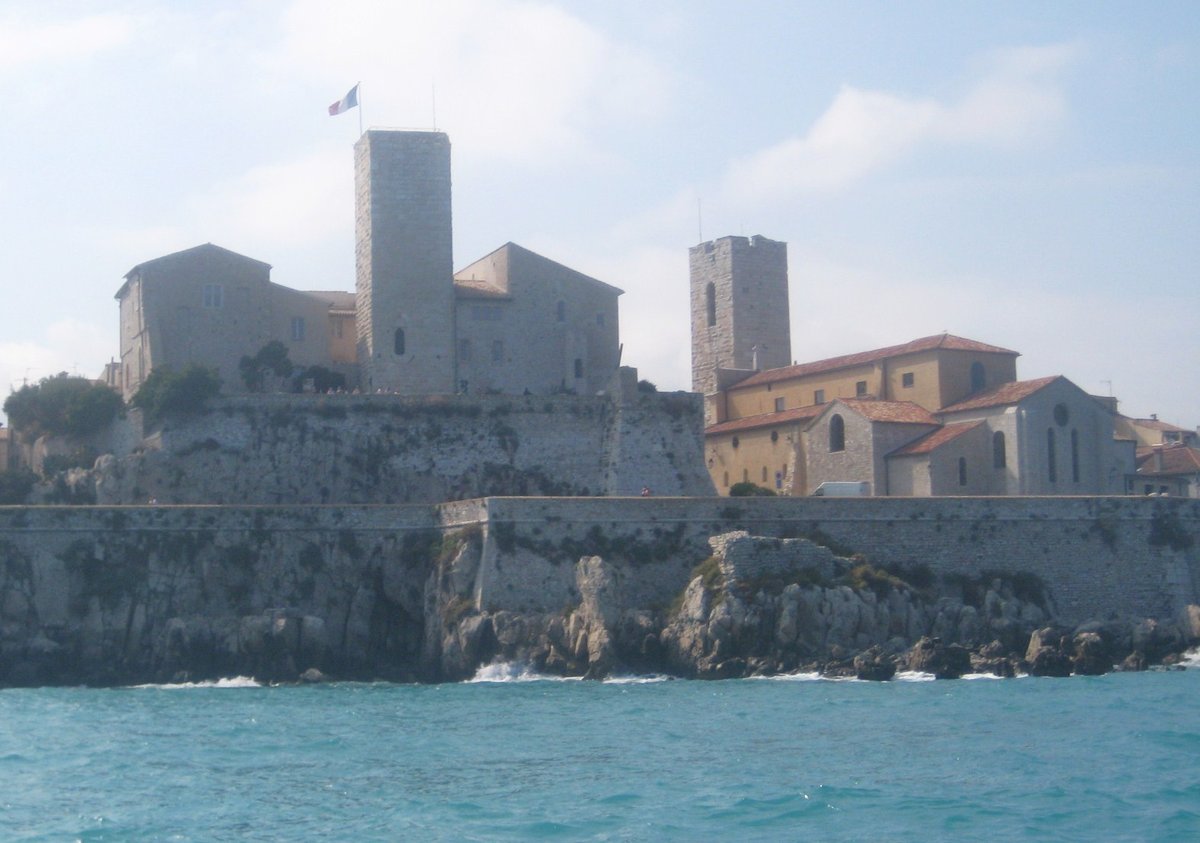
Picasso Museum Antibes: Visiting Hours, Tickets, and Comprehensive Guide
Date: 14/06/2025
Introduction
Set on the sunlit ramparts of Antibes within the historic Château Grimaldi, the Picasso Museum (Musée Picasso) is a cultural gem of the French Riviera. This guide offers an in-depth look at the museum’s history, Picasso’s connection to Antibes, essential visiting information, and practical tips to help you make the most of your visit. Whether you are drawn by the allure of Picasso’s Mediterranean-inspired masterpieces, the château’s centuries-old stones, or the panoramic sea views, the Picasso Museum promises a memorable and enriching experience (thegoodlifefrance.com, explorenicecotedazur.com).
Contents
- History and Cultural Significance
- Picasso’s Antibes Period
- The Château Grimaldi: From Fortress to Museum
- Practical Visitor Information
- Location & Access
- Visiting Hours
- Ticketing
- Accessibility
- Facilities
- Highlights of the Collection
- Visitor Experience & Travel Tips
- Nearby Attractions
- Frequently Asked Questions (FAQ)
- Sources
History and Cultural Significance
Picasso’s Connection to the French Riviera
Picasso’s fascination with the Côte d’Azur began in the early 20th century. Drawn by the region’s distinctive light and relaxed pace of life, he visited often, especially during the 1920s and 1930s, accompanied by his first wife, Olga Khokhlova. Antibes and its neighboring towns offered Picasso a creative refuge, contrasting with the intensity of Paris and later providing solace after the traumas of the Spanish Civil War and World War II (thegoodlifefrance.com).
The Antibes Period (1946): A Creative Renaissance
In 1946, curator Romuald Dor de la Souchère invited Picasso to use the then-underused Château Grimaldi as his studio. Over several months, Picasso channeled the optimism and vibrancy of the Mediterranean into a prolific output, despite postwar shortages of materials. Works such as “La Joie de Vivre,” “Les Clés d’Antibes” (a mural painted directly on the walls), and dozens of paintings, drawings, and ceramics emerged from this period, many inspired by Greek mythology, the sea, and his partner Françoise Gilot (iconicriviera.com, bestofniceblog.com).
Picasso’s generosity led him to donate 23 paintings and 44 drawings from this residency to the city, laying the foundation for what would become the world’s first museum dedicated solely to his work (provence-alpes-cotedazur.com).
The Château Grimaldi: From Ancient Acropolis to Iconic Museum
Originally built atop the Greek acropolis of Antipolis, the Château Grimaldi has served as a Roman fort, a medieval residence, and later as the town hall. Its transformation into a museum began in 1925, and in 1966 it was officially inaugurated as the Musée Picasso (explorenicecotedazur.com). The setting melds centuries of history with Picasso’s modernist vision, creating a unique dialogue between art and architecture.
Practical Visitor Information
Location & How to Get There
- Address: Place Mariejol, 06600 Antibes, France
- Access: The museum is easily reached on foot from Antibes’ town center and is a 15-minute walk from the SNCF train station. Paid parking is nearby but limited, especially in high season (France Adventurer).
Visiting Hours
- June 15 – September 15: 10:00 AM – 6:00 PM (no midday closure)
- September 16 – June 14: 10:00 AM – 1:00 PM and 2:00 PM – 6:00 PM (closed for lunch 1:00–2:00 PM)
- Closed: Mondays and certain public holidays (January 1, May 1, November 1, December 25)
Check the official museum website for last-minute updates (charcotrip.com).
Tickets & Admission
- Adult: €8 (as of June 2025)
- Reduced Rate: €6–8 (students, seniors, teachers, groups)
- Free: Children under 18, disabled visitors and their companions, job seekers, accredited guides
- Special exhibitions: May incur a supplemental fee
- Where to buy: On-site or online (recommended during peak seasons)
Museum entry is included in some regional passes, such as the French Riviera Pass (explorenicecotedazur.com).
Accessibility
- The main galleries are accessible to wheelchair users, but some upper levels are only reachable by stairs due to the château’s historic nature.
- Accessible restrooms available. Staff can assist visitors with reduced mobility.
- Multilingual guides and signage (French, English, Italian).
Facilities
- Restrooms and a cloakroom for small bags.
- Gift shop with Picasso-related books, prints, and souvenirs.
- No onsite café, but numerous dining options are nearby.
Highlights of the Collection
Picasso’s 1946 Antibes Works
- “La Joie de Vivre”: A celebration of postwar optimism and Mediterranean spirit.
- “Les Clés d’Antibes”: Mural painted directly onto the château’s wall.
- “The Goat (La Chèvre)”: A playful bronze sculpture.
- “Still Life with Owl and Three Sea Urchins”: A nod to local marine life.
- Extensive ceramics: Over 70 pieces crafted in nearby Vallauris.
Other Artists and Temporary Exhibitions
The museum also features modern works by Nicolas de Staël, Miró, Germaine Richier, and others, with regular temporary exhibitions included in standard admission (explorenicecotedazur.com).
Terrace and Views
The terrace displays sculptures with sweeping views of the Mediterranean—an inspiring backdrop for photographs and a highlight of the visit (France Adventurer).
Visitor Experience & Travel Tips
- Best visiting times: Early morning or late afternoon, especially in summer.
- Duration: Allow 1–2 hours to explore the museum and enjoy the terrace.
- Photography: Non-flash photography is generally allowed except in some temporary exhibitions.
- Family-friendly: Workshops and activity booklets for children are sometimes available.
- Language: Staff speak French and often English; printed guides are multilingual.
Travel Tips
- Combine your visit with the Antibes Provençal market, walks along the ramparts, or a stop at the Antibes Cathedral.
- The Old Town’s cafés and bakeries are perfect for a post-museum break.
Nearby Attractions
- Fort Carré: 16th-century fortress with panoramic views.
- Antibes Cathedral (Notre Dame de l’Immaculée Conception): A blend of Romanesque, Baroque, and neoclassical architecture.
- Port Vauban: Europe’s largest marina, steps from the museum.
- Provençal Market: Vibrant daily market just behind the museum.
Frequently Asked Questions (FAQ)
Q: Are tickets required for entry?
A: Yes, tickets are needed. Purchase on-site or online in advance during high season.
Q: What are the museum’s opening hours?
A: Open daily except Monday, with seasonal hours—see above for specifics.
Q: Is the museum accessible for wheelchairs?
A: Main galleries are accessible; upper floors may require stairs.
Q: Can I take photos inside?
A: Non-flash photography is allowed unless otherwise indicated.
Q: Are guided tours available?
A: Yes, in French and English. Book in advance for groups.
Q: Is the museum suitable for children?
A: Yes, with family activities and workshops offered during holidays.
Sources
- The Good Life France: Picasso and the French Riviera
- Explore Nice Côte d’Azur: Musée Picasso Antibes
- Musée Picasso Antibes Official Site
- Charcotrip: Picasso Museum Guide
- Visit Places France: Museum Details
- Provence-Alpes-Côte d’Azur Tourist Board: Picasso Museum
- Best of Nice Blog: Picasso Museum Antibes
Plan Your Visit
The Picasso Museum Antibes is more than a gallery—it’s a testament to Picasso’s lifelong search for inspiration, set in a location that shaped his creative resurgence. With its accessible visiting hours, affordable tickets, and rich programming, the museum invites you to follow in Picasso’s footsteps along the Riviera.
For up-to-date information, special exhibitions, and online ticketing, visit the official museum website. Download the Audiala app for self-guided tours, and explore our related Antibes travel guide.
Happy exploring!
